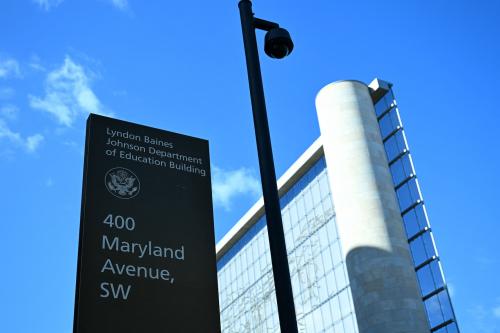Few state governments adequately report on the state of their infrastructure and the estimated costs of maintaining it over time, Zhirong Zhao, Camila Fonseca-Sarmiento, and Jie Tan say in a paper presented at the 2020 Municipal Finance Conference. “The lack of available information about infrastructure condition forces the public and policymakers to rely on outside analysis of data to inform decision-making. While such sources are important and largely reliable, states should consider making data collection, distribution, and disclosure more of a priority in their capital budgeting processes,” the authors conclude. Their presentation was drawn from a November 2019 report for the Volcker Alliance, “America’s Trillion-Dollar Repair Bill.”
The authors find significant variation in the attention given to capital budget expenditures across states. Common practices include little to no public disclosure of infrastructure needs, poor standardization in the definition and inventory of infrastructure needs, limited separation between the capital and operating budgets during the planning process, and a lack of clear designation of responsibility for capital budget preparation. Capital expenditures are not consistently given their own legislative committees, planning periods, or budget documents and even subsections. Many states also plan their capital investments based on available revenue, rather than need. In the few states with centralized, multi-year Capital Improvement Plans (CIPs), there is evidence of a gap between designated funding and total department requests; in other states, deferred maintenance requests that have not received funding are poorly documented, if at all.
Given the importance of infrastructure spending and the large estimated cost of deferred repairs, the authors say state government should:
- Publish clear, publicly available graphics depicting capital budget planning, timelines, and agency responsibilities.
- Form an agency in charge of the statewide capital planning budget and written plans for coordination between the capital and operating budget processes.
- Designate a legislative committee to oversee the capital budget.
- Prepare a capital budget separate from the operating budget.
- Create a single location online where the public can access capital budget information, including descriptions and definitions of existing facilities and planned capital expenditures.
- Standardize CIPs so they comprise all current infrastructure needs, including those still unfunded, as well as annual funding to address deferred maintenance.
- Link the current capital budget with the longer-term CIP.
- Develop a centralized, regularly updated inventory of all state-owned and state–funded infrastructure with information on condition, accumulated maintenance needs, and costs of upkeep.
- Issue a statewide report on infrastructure needs and standards for measuring them.
- Create a coordination agency to assess and report infrastructure needs to prioritize projects and recommend appropriate funding to policymakers.
Editor’s Note:
This paper was prepared for the 2020 Municipal Finance Conference on July 13 & 14, 2020. The conference is a collaboration of the Brookings Institution’s Hutchins Center on Fiscal and Monetary Policy, the Brandeis International Business School’s Rosenberg Institute of Public Finance, Washington University in St. Louis’s Olin Business School, and the University of Chicago’s Harris Institute of Public Policy. It aims to bring together academics, practitioners, issuers, and regulators to discuss recent research on municipal capital markets and state and local fiscal issues.
The Brookings Institution is committed to quality, independence, and impact.
We are supported by a diverse array of funders. In line with our values and policies, each Brookings publication represents the sole views of its author(s).





Commentary
Few state governments adequately track the state of their infrastructure and cost of maintaining it
July 13, 2020